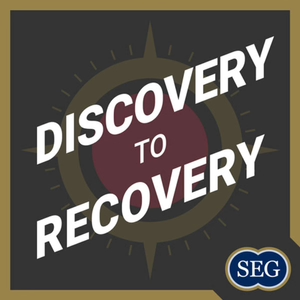
Namibia is a country of diverse geology and mineral deposits that is also embracing the green energy transition. The diversity of critical minerals and metals and the expansion of green energy sources for mining are all exciting for the future of Namibia.
Namibia is 'elephant country' in more than one way!
The Society of Economic Geologists is thrilled to collaborate with our partners the Geoscience Council of Namibia and the Geological Society of Namibia to host the SEG 2024 conference in Windhoek, September 27-30.
This episode explores the geology and mineral deposits, from the Proterozoic to the present and the mineral potential that exists throughout the country. We hope you will listen in and then join us in Windhoek in a few months!
Anna Nguno, Deputy Director at the Geological Survey of Namibia (GSN), Ministry of Mines and Energy and co-chair of SEG 2024 introduces the episode with a conference teaser: what to expect at the conference, the main themes, technical sessions, field trips, and more.
Geological Mineral and Information System - Namibia (Geological Survey of Namibia)
Next Roy Miller, previous Director of the Geological Survey of Namibia, provides an overview of the regional geology and tectonic history of Namibia, including the mineral deposits and economic potential of the various belts.
- Paleoproterozoic basement rocks contain the 1.2 Haib porphyry deposit.
- Mesoproterozoic rocks in the country are divided into 3 complexes, none of which contain extensive mineralization.
- The Neoproterozoic to Cambrian Damara Supergroup is the most extensive succession in Namibia, contains a wealth of different types of ore deposits, and is found in three belts: 1) the Damara belt in central Namibia; 2) the Kaoko belt in the northwest; and 3) the Gariep in the southwest
- The Carboniferous to Jurassic Karoo Supergroup contains thin lenses of coal and sandstone aquifers.
- Cretaceous continental breakup resulted in Etendeka flood basalts.
- At the end of the Cretaceous the region became semi-arid and the Kalahari Desert began to form. In wetter periods, the Orange River flooded and deposited diamonds from inland to the coast, 90% of which are gem quality and mined today by De Beers.
- From 21 million years ago, sand began to accumulate in major dune fields.
Finally, Mary Barton, Principal Geoscientist at Odikwa Geoservices, talks about her introduction to the field of geology and what a day in the life of a Namibian greenfields exploration geologist looks like. She discusses above ground risks in the country (including lions and cheetahs!), the placer diamond mining industry, and what opportunities the green transition might bring to the country.
Theme music is Confluence by Eastwinds
SEG 2024 will be in Windhoek, Namibia! Come join us in a country known for its spectacular and diverse geology 27- 30 September, 2024.
02/26/24 • 57 min
Generate a badge
Get a badge for your website that links back to this episode
<a href="https://goodpods.com/podcasts/discovery-to-recovery-85850/50-the-diverse-mineral-deposits-and-geology-of-namibia-45538399"> <img src="https://storage.googleapis.com/goodpods-images-bucket/badges/generic-badge-1.svg" alt="listen to 50. the diverse mineral deposits and geology of namibia on goodpods" style="width: 225px" /> </a>
Copy